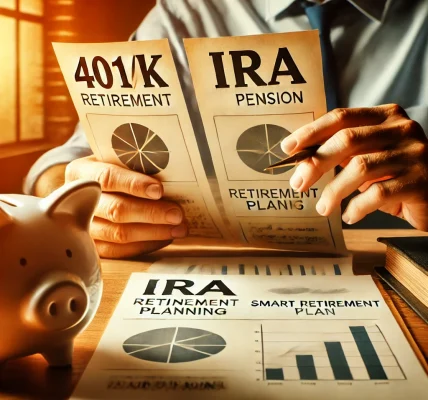Retirement is a time to enjoy the fruits of your labor, but financial security remains a top priority. Retirees often seek low-risk investment options to preserve capital, generate steady income, and ensure a comfortable lifestyle. While investing always carries some risk, there are several financial instruments designed to minimize volatility and provide stable returns. This guide explores the best low-risk investment options for retirees and how to create a diversified portfolio that aligns with your retirement goals.
Why Low-Risk Investments Matter in Retirement
During retirement, the focus shifts from aggressive wealth accumulation to capital preservation and income generation. Unlike younger investors who have time to recover from market downturns, retirees must prioritize stability and predictability. Key reasons for choosing low-risk investments include:
- Capital Preservation: Protecting savings from market fluctuations.
- Steady Income: Ensuring a reliable cash flow for daily expenses.
- Inflation Protection: Keeping up with rising costs of living.
- Risk Management: Minimizing exposure to market volatility.
Top Low-Risk Investment Options for Retirees
1. Fixed Deposits (Certificates of Deposit – CDs)
Fixed deposits, also known as Certificates of Deposit (CDs) in the U.S., are one of the safest investment options. These are bank-issued deposits that offer a fixed interest rate for a predetermined period.
- Pros:
- Guaranteed returns with no market risk
- Various term options (short- and long-term)
- FDIC-insured (up to $250,000 in the U.S.)
- Cons:
- Lower returns compared to stocks or mutual funds
- Early withdrawal penalties
2. Government Bonds
Government bonds are debt securities issued by federal or state governments, offering stable returns with minimal risk.
- Pros:
- Backed by the government, making them highly secure
- Fixed interest payments
- Inflation-protected options available (TIPS in the U.S.)
- Cons:
- Lower yield compared to corporate bonds
- Interest rate risk if sold before maturity
3. Municipal Bonds
Municipal bonds (munis) are issued by local governments and provide tax advantages, especially for retirees in higher tax brackets.
- Pros:
- Exempt from federal taxes and, in some cases, state taxes
- Reliable interest income
- Lower risk than corporate bonds
- Cons:
- Potential credit risk if the municipality faces financial troubles
- Interest rate fluctuations can impact bond prices
4. Dividend-Paying Stocks
While stocks carry some risk, investing in blue-chip companies with a history of paying stable dividends can provide retirees with a steady income stream.
- Pros:
- Potential for capital appreciation
- Regular dividend income
- Inflation protection over time
- Cons:
- Market risk (though less volatile than growth stocks)
- Dividends are not guaranteed
5. Annuities
Annuities are insurance products that provide guaranteed income for life or a specified period.
- Pros:
- Lifetime income security
- Customizable payment options (monthly, quarterly, or annually)
- Protection from outliving savings
- Cons:
- Can have high fees
- Limited liquidity (difficult to access funds in emergencies)
6. Real Estate Investment Trusts (REITs)
REITs allow retirees to invest in real estate without owning physical properties. These trusts generate income through rental properties and commercial real estate investments.
- Pros:
- Regular dividend payouts
- Diversification in the real estate sector
- No property management responsibilities
- Cons:
- Market risk (can fluctuate with economic conditions)
- Tax implications on dividends
7. Money Market Funds
Money market funds invest in short-term, high-quality debt instruments and provide liquidity and stability.
- Pros:
- Highly liquid (easy access to funds)
- Low risk and steady returns
- Protection against stock market volatility
- Cons:
- Lower yields compared to other investments
- Not FDIC-insured (though highly secure)
8. High-Yield Savings Accounts
A high-yield savings account offers better interest rates than traditional savings accounts while maintaining full liquidity.
- Pros:
- FDIC or NCUA insured (up to $250,000 in the U.S.)
- Immediate access to funds
- No market risk
- Cons:
- Interest rates may fluctuate
- Lower returns than investments like bonds or annuities
9. Treasury Inflation-Protected Securities (TIPS)
TIPS are U.S. government bonds designed to protect against inflation by adjusting the principal amount based on inflation rates.
- Pros:
- Inflation-adjusted returns
- Government-backed security
- Predictable interest income
- Cons:
- Lower yields in low-inflation environments
- Market risk if sold before maturity
Building a Low-Risk Retirement Portfolio
A well-balanced retirement portfolio should include a mix of low-risk investments to provide both security and income. Here’s how you can structure it:
- Diversification: Allocate funds across different asset classes (bonds, annuities, dividend stocks, REITs) to spread risk.
- Liquidity Considerations: Keep some assets in liquid investments (high-yield savings accounts, money market funds) for emergencies.
- Income vs. Growth Balance: Focus on income-generating investments while maintaining a small percentage in growth assets (e.g., dividend stocks, REITs).
- Regular Review: Periodically reassess your portfolio to adjust for inflation, market changes, and personal needs.
Conclusion
Choosing the right low-risk investments is crucial for retirees seeking financial security. By diversifying across fixed deposits, bonds, annuities, dividend stocks, and other stable options, retirees can build a reliable income stream while preserving their capital. Regularly reviewing and adjusting investments ensures that you stay ahead of inflation and economic shifts, leading to a worry-free and financially sound retirement.
Are you ready to secure your retirement? Start exploring these low-risk investment options today to enjoy peace of mind in your golden years!




